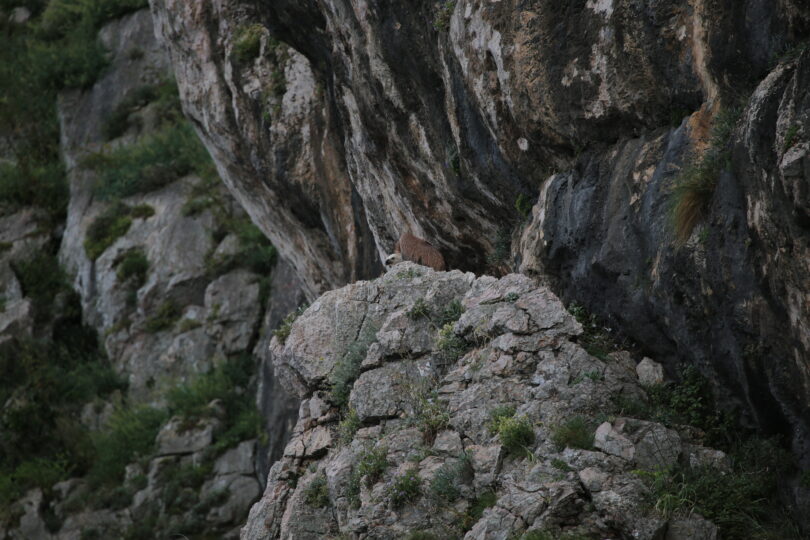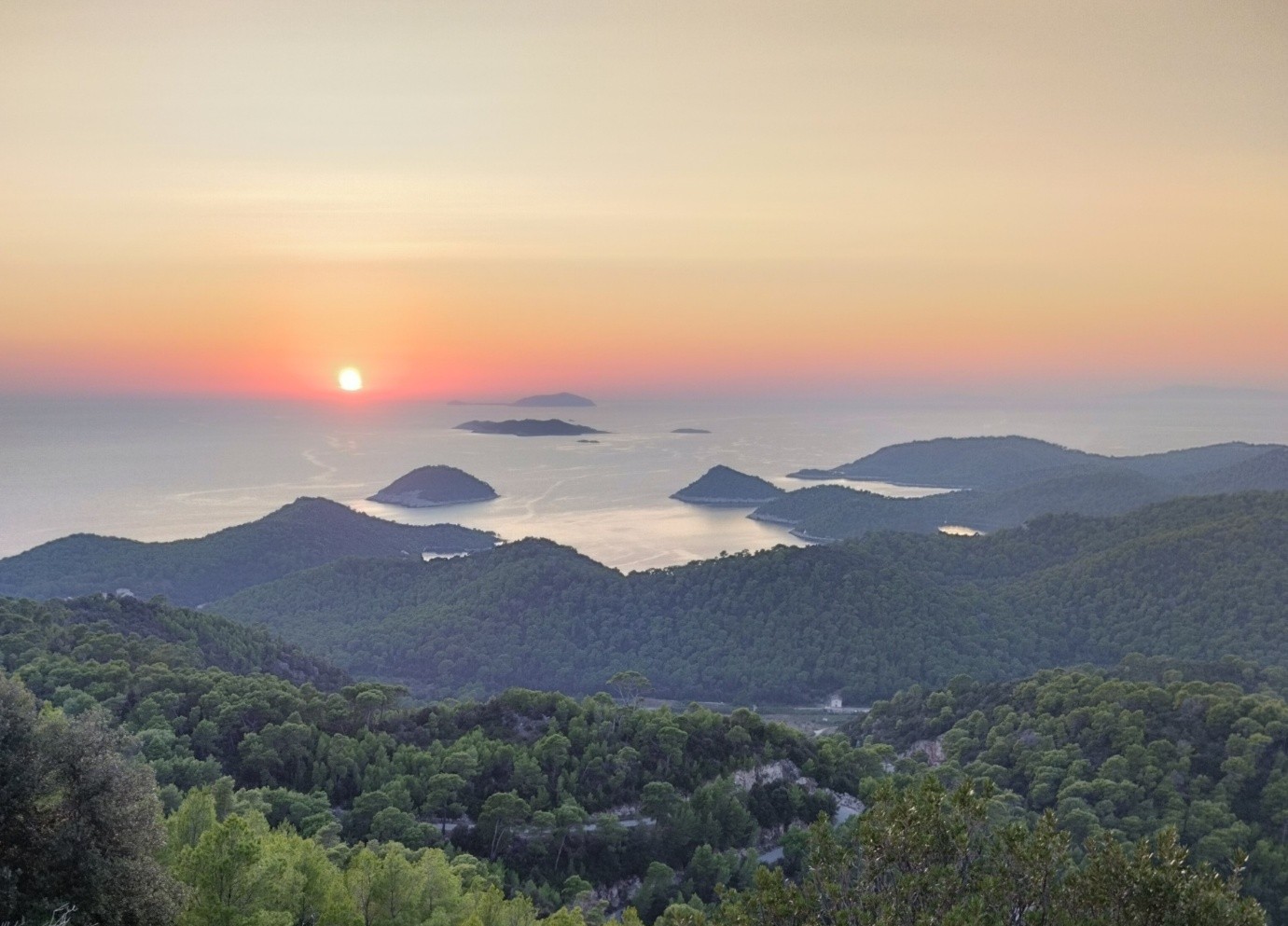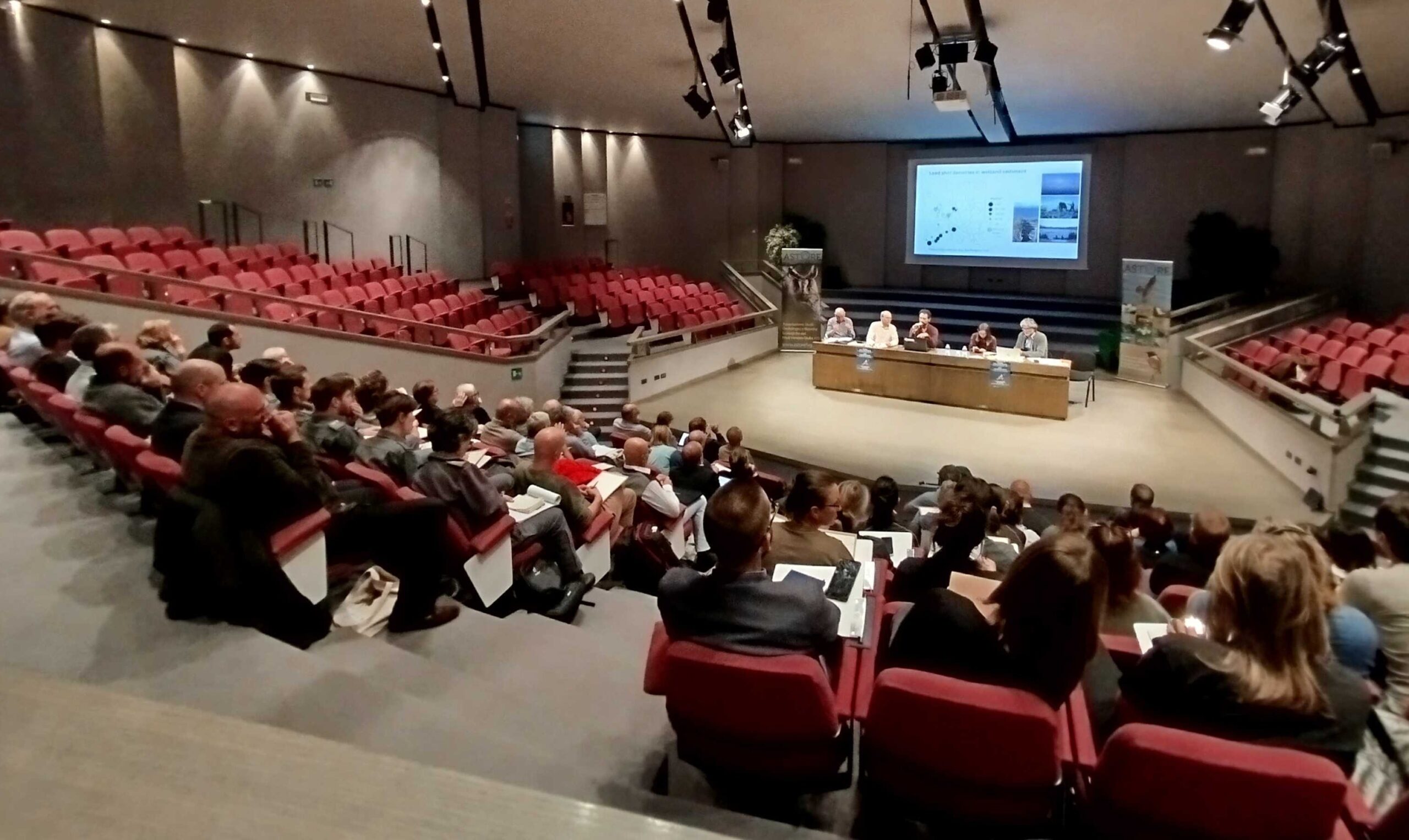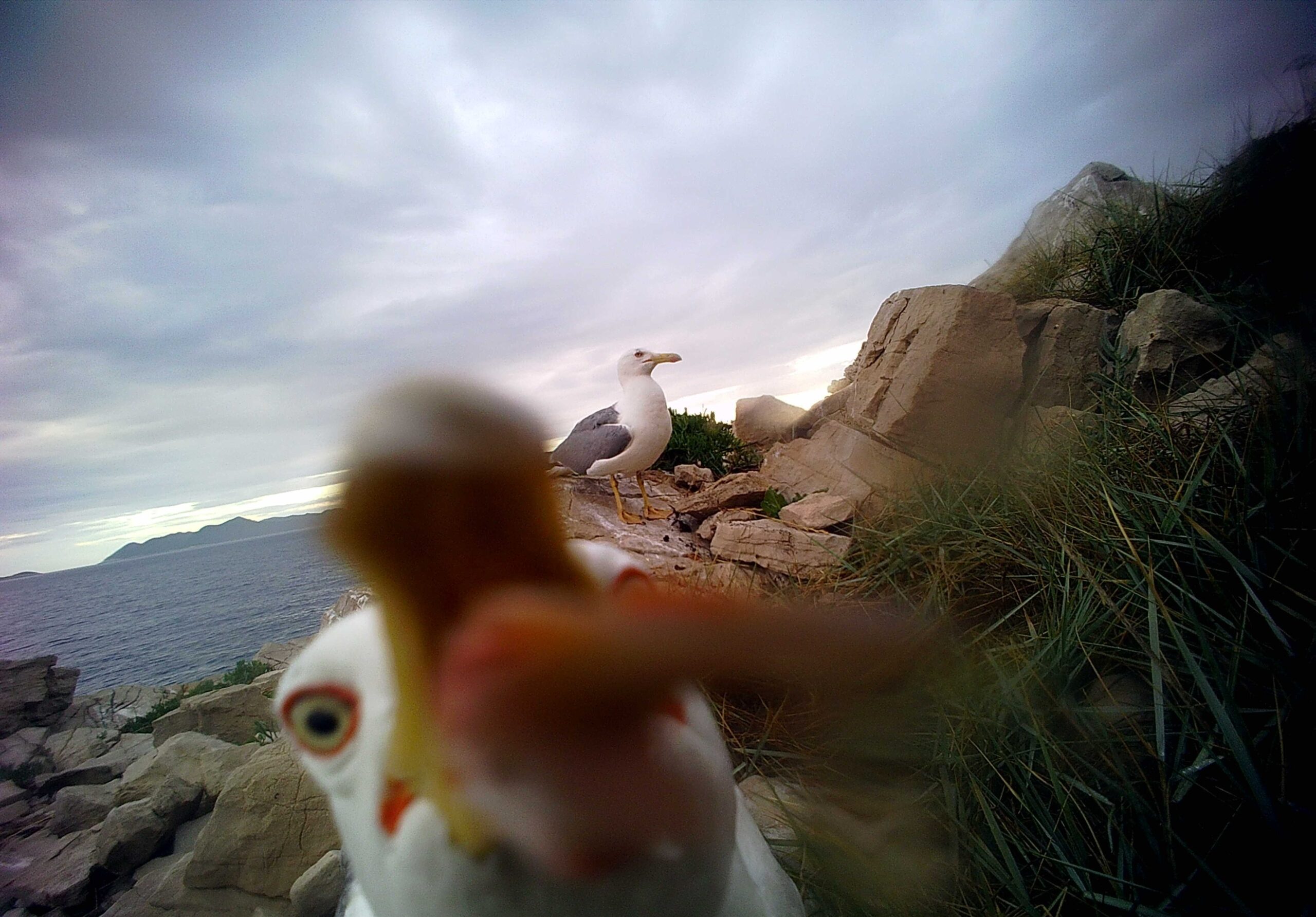When the LIFE SUPport project partnership started the SUP Patrol volunteer action this summer, we didn’t anticipate spontaneously gaining another volunteer pair
Jessica Toms is a marine biologist, and Jelly Gelletich is a diving instructor and skipper from South Africa. After Jessica completed her studies, they traveled and worked together in Mozambique, Madagascar, Namibia, and many other exotic countries. Since Jelly has some family roots in Croatia, they had the opportunity to work seasonally at a diving center in 2019. They describe their first encounter with Croatia as impressive, and although they liked it, they didn’t expect to return so soon, let alone stay here. They now both work at Diving Center Mihuric in Selce.
In their first year in Kvarner, they noticed the griffon vultures and visited the Visitor Center and Rehabilitation Center for Griffon Vultures “Beli” on Cres. They were fascinated by these unique scavengers and wanted to learn more about the species and its importance to nature. Every time they went out to sea after that, they kept an eye out for the vultures.
“We had already noticed and followed Biom on social media. Due to the nature of our work in South Africa, we were quite involved in citizen science projects related to marine environments. We were curious about what was being done here in terms of species connected to the sea,” says Jessica.
As researchers who have participated in various biological projects in Southern Africa, they understand how valuable each piece of information about a species is to experts. So, while leading diving tours in Kvarner, they wanted to assist the project partners and help the griffon vultures.
“We want to contribute to the conservation of griffon vultures. We are in the area where they live every day, so if we can record valuable information or report an injured vulture, we will gladly help,” Jelly adds.
Jelly grew up in an area of Africa where vultures are common, so he is somewhat familiar with this group of birds. He pointed out that there are many threats to local vultures there, such as reduced agriculture and livestock farming, electrocution by power lines and poisoning. Near the town of Mica, where they lived, there is also the Moholoholo Wildlife Rehabilitation Center, particularly for vultures. Jelly adds that he knew something about vultures because of this as his sister worked there, but he didn’t realize how special the vultures in Kvarner are. He was fascinated to learn that vultures in Croatia nest on cliffs above the sea.
“We read that summer is the most sensitive period for vultures. Last year, we thought there might be a nest near one of our diving sites, but we couldn’t confirm it. Since we are out at sea every day, we realized we could help. If we see a bird in trouble, we can assist or at least call in experts. Diving is fun, and this extra engagement makes it even more interesting. The owners of DC Mihuric, Maggy and Hinko Car, are strongly oriented towards nature conservation, and often have researchers and experts from Rijeka and other parts of Europe who, for example, study several types of fishes. They have also performed yearly underwater cleanup actions in Selce for over a decade. They are therefor also supportive in vulture disturbance monitoring being done during their diving excursions” says Jess.

In addition to diving, they are excited to share information about Croatia’s natural heritage and endangered species like griffon vultures. It’s also a way to raise awareness among guests about the importance of biodiversity and its preservation.
They point out that they have worked in various attractive natural destinations around the world, but in some places, there was the least concern for nature, which saddened them. Here they are happy because, in addition to their daily work which they love, they have a new, higher goal – to help the vultures.
Many people come and don’t know that the birds are here. This is a great opportunity to inform and inspire others to care for their environment, learn how to behave around cliffs, and know what to do and what not to do, they both add.
Finally, they shared their messages with our readers:
“Don’t be afraid to reach out and share data with experts, no matter how insignificant you may think it is. Even if it just means collecting, recording, and sharing information. Any piece of information could potentially be valuable to science. I know this from my own experience in South Africa, where I studied molecular ecology of nudibranch molluscs of South Africa,” says Jessica.
“In Namibia, we worked at the Namibian Dolphin Project researching marine mammals, seals, penguins and other seabirds, but we also maintenaned the stranding monitoring networks for marine mammals and endangered seabirds. We quickly realised the asset we had in the local eco-tourism industry, who were eager to help in monitoring and alerted us to marine mammal sightings and stranded animals over a larger area. Everyone can contribute. Even if you think what you see or observe is unimportant or ordinary, it can be significant and highly useful to biologists. Get involved!” adds Jelly.
We are grateful and happy that Jessica and Jelly recognized the importance of this volunteer task and joined in the effort to save the griffon vultures.
 In addition to diving, they are excited to share information about Croatia’s natural heritage and endangered species like griffon vultures. It’s also a way to raise awareness among guests about the importance of biodiversity and its preservation.
They point out that they have worked in various attractive natural destinations around the world, but in some places, there was the least concern for nature, which saddened them. Here they are happy because, in addition to their daily work which they love, they have a new, higher goal – to help the vultures.
Many people come and don’t know that the birds are here. This is a great opportunity to inform and inspire others to care for their environment, learn how to behave around cliffs, and know what to do and what not to do, they both add.
Finally, they shared their messages with our readers:
“Don’t be afraid to reach out and share data with experts, no matter how insignificant you may think it is. Even if it just means collecting, recording, and sharing information. Any piece of information could potentially be valuable to science. I know this from my own experience in South Africa, where I studied molecular ecology of nudibranch molluscs of South Africa,” says Jessica.
“In Namibia, we worked at the Namibian Dolphin Project researching marine mammals, seals, penguins and other seabirds, but we also maintenaned the stranding monitoring networks for marine mammals and endangered seabirds. We quickly realised the asset we had in the local eco-tourism industry, who were eager to help in monitoring and alerted us to marine mammal sightings and stranded animals over a larger area. Everyone can contribute. Even if you think what you see or observe is unimportant or ordinary, it can be significant and highly useful to biologists. Get involved!” adds Jelly.
We are grateful and happy that Jessica and Jelly recognized the importance of this volunteer task and joined in the effort to save the griffon vultures.
In addition to diving, they are excited to share information about Croatia’s natural heritage and endangered species like griffon vultures. It’s also a way to raise awareness among guests about the importance of biodiversity and its preservation.
They point out that they have worked in various attractive natural destinations around the world, but in some places, there was the least concern for nature, which saddened them. Here they are happy because, in addition to their daily work which they love, they have a new, higher goal – to help the vultures.
Many people come and don’t know that the birds are here. This is a great opportunity to inform and inspire others to care for their environment, learn how to behave around cliffs, and know what to do and what not to do, they both add.
Finally, they shared their messages with our readers:
“Don’t be afraid to reach out and share data with experts, no matter how insignificant you may think it is. Even if it just means collecting, recording, and sharing information. Any piece of information could potentially be valuable to science. I know this from my own experience in South Africa, where I studied molecular ecology of nudibranch molluscs of South Africa,” says Jessica.
“In Namibia, we worked at the Namibian Dolphin Project researching marine mammals, seals, penguins and other seabirds, but we also maintenaned the stranding monitoring networks for marine mammals and endangered seabirds. We quickly realised the asset we had in the local eco-tourism industry, who were eager to help in monitoring and alerted us to marine mammal sightings and stranded animals over a larger area. Everyone can contribute. Even if you think what you see or observe is unimportant or ordinary, it can be significant and highly useful to biologists. Get involved!” adds Jelly.
We are grateful and happy that Jessica and Jelly recognized the importance of this volunteer task and joined in the effort to save the griffon vultures.





